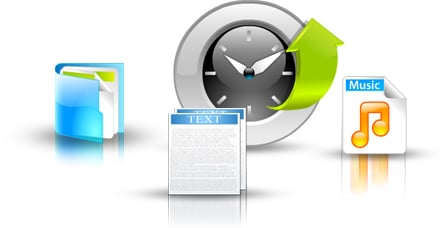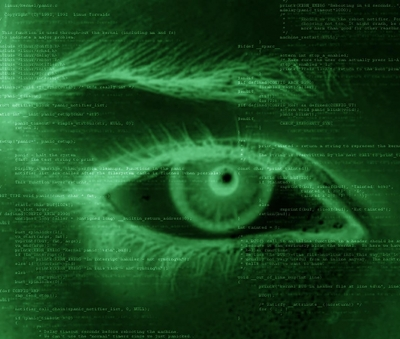
Continuous data protection (CDP) differs from traditional backup recovery software in one essential way: whereas backup methods require data to be copied to another entity, such as a tape or a disk, CDP data is copied and then stored on the local storage area network (SAN) or the network-attached storage (NAS) system. CDP works by making frequent, incremental copies of the data itself. Essentially, CDP tracks every change made and captures continuous changes to data. CDP serves as a baseline reference to the original state of the data, it tracks the state of a file when a change occurs and tracks the change in the backup system, and it allows granular recovery for multiple point-in-time states of the data.[1] When an incident occurs and backup recovery is necessary, CDP allows the user to go back and reset a file, dataset, or entire database to the state it was in before. So, should CDP replace traditional backup methods?
Pros
- Using CDP after the initial setup does not require intensive IT training and the backed up files can be easily accessed by the average desktop and/or laptop user.
- CDP integrates into established data protection frameworks very easily and can protect data on other storage tiers.
- CDP preserves a record of every change made to a computer.
- If a system becomes infected with a virus or a while is corrupted and the problem is not discovered until later, it is still possible to recover the most recent clean copy of the affected file.[2]
- Data recovery is possible in a manner of seconds, much less time than with other backup systems. However, this is contingent on file size and network speed.
- Installing CDP hardware does not put existing data at risk. Furthermore, there is no gap in data when a restore occurs.
 If you’ve been drooling over the Apple iPad or the Kindle Fire, your drool is going to turn into a waterfall after you have the Nexus 7 in your hands! The competition between the three tablets is now heating up. Available for pre orders now, the Nexus 7 is the new talk of techies everywhere. Although the Nexus 7 and the Kindle Fire are both similar to each other, the big question is what makes the Nexus 7 unique and different from the Amazon Kindle Fire? If you’re planning to buy a tablet or just want to see what all the hype is about then keep reading!
If you’ve been drooling over the Apple iPad or the Kindle Fire, your drool is going to turn into a waterfall after you have the Nexus 7 in your hands! The competition between the three tablets is now heating up. Available for pre orders now, the Nexus 7 is the new talk of techies everywhere. Although the Nexus 7 and the Kindle Fire are both similar to each other, the big question is what makes the Nexus 7 unique and different from the Amazon Kindle Fire? If you’re planning to buy a tablet or just want to see what all the hype is about then keep reading!
 Social media and technology play a big role in our lives by keeping us entertained and well-connected with our clients, co-workers, friends and family. It has become a part of our daily lives and something we cannot go without. Technology and social media has also become increasingly important in the political arena, use of online social media for political activism is used through blogs, video and social networking sites and has become a key for political debate – so much so that it has provoked a counter-response from some repressed countries. During 2011 blogging, video-sharing and tweeting were crucial in political events in the Middle East and North Africa. (
Social media and technology play a big role in our lives by keeping us entertained and well-connected with our clients, co-workers, friends and family. It has become a part of our daily lives and something we cannot go without. Technology and social media has also become increasingly important in the political arena, use of online social media for political activism is used through blogs, video and social networking sites and has become a key for political debate – so much so that it has provoked a counter-response from some repressed countries. During 2011 blogging, video-sharing and tweeting were crucial in political events in the Middle East and North Africa. ( If you thought viruses were scary, wait until you encounter Stuxnet and Flame. Well, let’s hope you don’t encounter them. What is Stuxnet and Flame you might wonder? Stuxnet is a computer worm that originated from the “Olympic Games,” a code name for a series of cyber attacks that were secretly launched on Iranian computers by President Obama. The worm was found traveling from computer to computer in different parts of the world and was powerful enough to take down between 1,000-5,000 centrifuges that Iran was using for its uranium. Stuxnet is the first cyber weapon ever used to cripple another country’s foundation.
If you thought viruses were scary, wait until you encounter Stuxnet and Flame. Well, let’s hope you don’t encounter them. What is Stuxnet and Flame you might wonder? Stuxnet is a computer worm that originated from the “Olympic Games,” a code name for a series of cyber attacks that were secretly launched on Iranian computers by President Obama. The worm was found traveling from computer to computer in different parts of the world and was powerful enough to take down between 1,000-5,000 centrifuges that Iran was using for its uranium. Stuxnet is the first cyber weapon ever used to cripple another country’s foundation. BYOD is a concept that is rapidly gaining steam throughout the IT business industry. By “gaining steam” I mean two things. It could reference the cartoon-like explosion of hot gaseous vapor from a person’s ears due to incessant aggravation; or it could simply be defined as an increase in positive momentum. The notion is rudimentary and obvious, almost intuitive: Should employees utilize their personal devices (phones, tablets, laptops, etc.) to complete work-related tasks while on the clock? Though the idea may be basic, the answer is a bit more complicated.
BYOD is a concept that is rapidly gaining steam throughout the IT business industry. By “gaining steam” I mean two things. It could reference the cartoon-like explosion of hot gaseous vapor from a person’s ears due to incessant aggravation; or it could simply be defined as an increase in positive momentum. The notion is rudimentary and obvious, almost intuitive: Should employees utilize their personal devices (phones, tablets, laptops, etc.) to complete work-related tasks while on the clock? Though the idea may be basic, the answer is a bit more complicated.